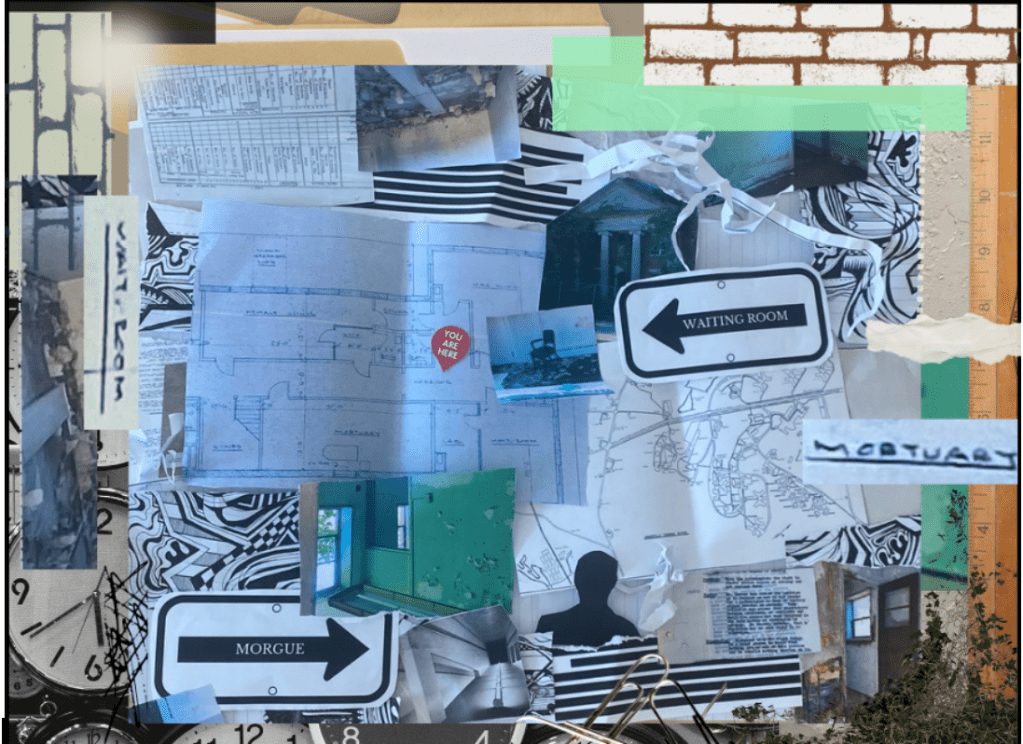Written By Ashten Carter

The floorplan was not the most remarkable thing that I saw in the archives. At first glance, there was nothing extraordinary about the basement of Knight Hospital. This was not like the documents that puzzled me, the images that startled me, and the narratives that captivated me. Yet, this blueprint was the piece that stuck with me. I suppose that is because there was no room (literal or figurative) for interpretation. It was a floor plan. There was supposedly no reading between the lines. There was no speculating about who created it, or how they must have felt, or why. It was objective, unlike so many of the documents we had spent the summer combing through. There was the boiler room, the clinics, the bathrooms, the storage room, the lab, the corridors, wheelchair ramps, the stairways, the garbage shed all neatly outlined and labeled. Precise down to the measurements.
And then there was the waiting room right next to the mortuary.
Holding that paper in my hand is not a feeling that I’ll soon forget. It was as though time stood still for a moment. And in a way it had. I was imagining being in a place of “waiting.” A place where time stood still.
How would it have felt to be sitting in those chairs?
What did it feel like coming into the hospital from the dorms?
Would they tell you why you were there?
How would it feel to leave the clinic, knowing no one ever returned from the door just down the hall?
How many friends had they lost while interned by the state?
What were their names?
Where are they buried?
Institutionalization reminds me of that waiting room. Institutions have historically been a place to hide away society’s “undesirables.” To the general public, there’s an “out of sight, out of mind” approach to those who are institutionalized. It’s why we find these facilities in such remote areas. It makes it easier to forget about the people that were already forgotten. However, for those who live in institutions, there is no putting it out of your mind.
Mansfield Training School was an influential institution, a contributor to the local economy, and “the only option” for many Disabled people and their families. It was also a warehousing operation; it was a “place of waiting.” It, like other institutions of its kind, was where you went to die.
Just as much as I wondered what it would be like to sit in that waiting room while the facility was in operation, I couldn’t help but wonder what it would be like now.
What color is the peeling paint?
What would it be like to see the records of former residents strewn across the floor?
30 years after the closure of Mansfield Training School, Knight Hospital stands overgrown and decaying. The records stored in that same basement have been deemed ‘irretrievable.’ While institutionalized, the residents’ stories were kept hidden from the outside world. Even now that the institution has closed, their stories remain untold.
Waiting is the very nature of being institutionalized. We wait for funding for community-based options. We wait to hear from family, if we have any. We wait for the next meal or the next way to pass the time. Sometimes, time passes us.
Many residents spent decades of their lives at Mansfield Training School, an institution that claimed to specialize in caring for those with disabilities. In actuality, institutions like MTS specialized in waiting.
Did the residents of MTS know the waiting room is for the clinic?
Did they fear that it just as easily may have been for the morgue?
